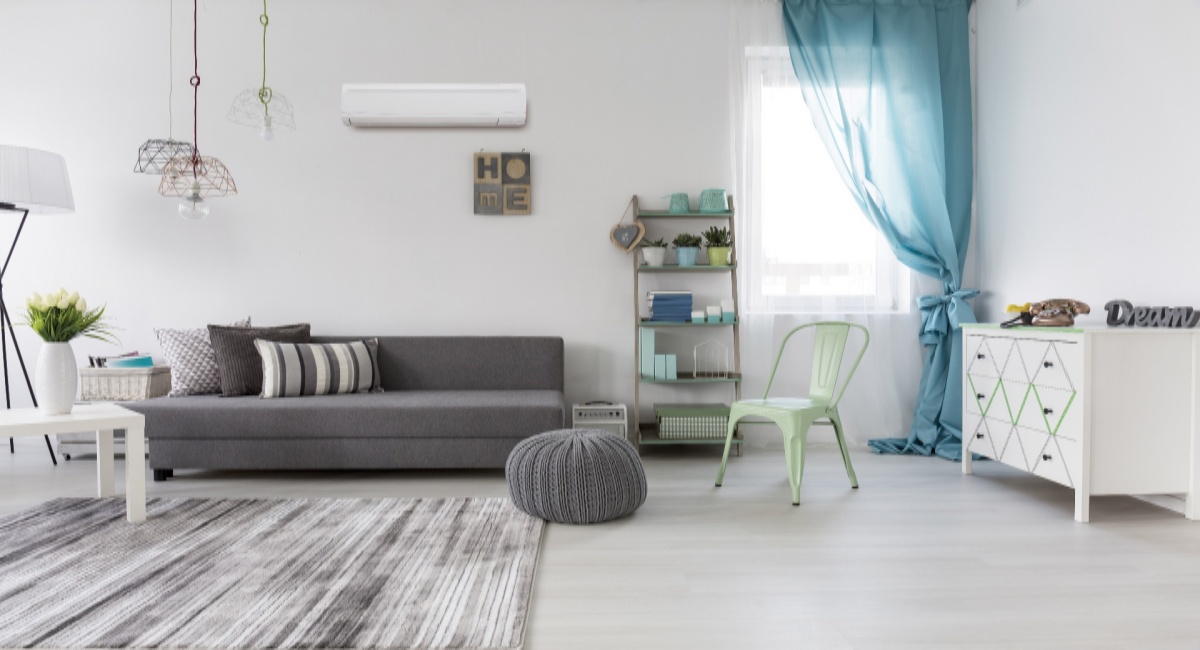When it comes to heating and cooling your home, there’s no one-size-fits-all solution. Traditional HVAC systems are common, but ductless mini-split systems have been growing in popularity due to their energy efficiency, flexibility, and ease of installation. However, like any system, they come with their own set of pros and cons. If you’re considering a ductless mini-split system for your home, here’s what you need to know to make an informed decision.
What Is a Ductless Mini-Split System?
A ductless mini-split system consists of two main components: an outdoor compressor unit and one or more indoor air-handling units. Unlike traditional central air systems, which use ductwork to distribute air throughout the home, mini-splits deliver conditioned air directly into individual rooms or zones. The outdoor unit connects to the indoor unit(s) via a conduit, which houses the refrigerant line, power cable, and drain line.
Ductless mini-split systems are ideal for homes without ductwork or for adding supplemental heating and cooling to specific areas like additions, basements, or garages.
Pros of Ductless Mini-Split Systems
1. Energy Efficiency
One of the biggest advantages of ductless mini-split systems is their energy efficiency. Because they don’t rely on ductwork, mini-splits avoid the energy losses associated with forced-air systems. In fact, ductwork can account for up to 30% of energy loss, particularly if it’s poorly insulated or located in unconditioned spaces like attics or crawl spaces.
Additionally, mini-splits use inverter technology, which allows them to adjust the compressor speed based on the temperature needs of the room. This means they use only the energy necessary to maintain the desired temperature, resulting in lower utility bills.
2. Zoned Heating and Cooling
Ductless mini-split systems offer the benefit of zoned heating and cooling, allowing you to control the temperature in individual rooms or areas of your home. Each indoor unit operates independently, so you can adjust the temperature to suit different preferences in different spaces.
This is especially useful for larger homes or homes with rooms that tend to be hotter or colder than others. Zoned heating and cooling also prevent energy waste by only conditioning rooms that are in use.
3. Easy Installation
Compared to traditional HVAC systems, installing a ductless mini-split system is relatively easy and less invasive. Because no ductwork is required, installation usually only involves mounting the indoor units and connecting them to the outdoor unit through a small hole in the wall.
This makes mini-splits a great option for homes without existing ductwork, older homes, or room additions. Installation is typically completed in a matter of hours or days, depending on the number of units being installed.
4. Improved Indoor Air Quality
Ductless mini-split systems can improve indoor air quality by reducing the accumulation of dust, allergens, and contaminants that often build up in ductwork. Traditional HVAC systems can spread these particles throughout your home, contributing to poor air quality.
Many ductless systems come with advanced filtration options that capture dust, pollen, and other airborne particles, providing cleaner air for your home. Regular cleaning of the filters helps maintain air quality and system efficiency.
5. Quiet Operation
Ductless mini-splits are known for their quiet operation. The outdoor unit typically generates the most noise, while the indoor air-handling units are designed to be whisper-quiet, making them ideal for bedrooms, living rooms, or home offices where noise can be a concern.
In contrast, traditional HVAC systems often produce more noise due to air traveling through ducts and the operation of the central unit.
6. Flexibility
Mini-split systems are highly flexible in terms of placement and design. They come in a variety of sizes and can be installed in different configurations depending on your needs. Indoor units can be mounted on walls, recessed into ceilings, or even installed as floor-standing units, giving you plenty of options for your home’s layout and decor.
Multiple indoor units can be connected to a single outdoor unit, allowing for versatile temperature control across multiple rooms or zones.
Cons of Ductless Mini-Split Systems
1. Upfront Cost
One of the biggest drawbacks of ductless mini-split systems is the upfront cost. The initial price of the system, including installation, is typically higher than that of traditional HVAC systems, especially if you’re installing multiple indoor units.
However, the energy savings you’ll experience over time can offset this upfront expense, making ductless systems a cost-effective option in the long run. Be sure to consider your budget and how long you plan to stay in your home when deciding if the investment is worth it.
2. Aesthetic Impact
While ductless mini-split systems are smaller and more discreet than bulky window units, the indoor air-handling units are still visible in the room. Some homeowners may find the appearance of wall-mounted units unattractive, especially if they don’t match the home’s decor.
That said, there are options for recessed or floor-mounted units that offer a more subtle look. Keep in mind that the trade-off for their compact size and efficiency is that they’re not completely hidden like traditional ductwork.
3. Regular Maintenance
Ductless mini-split systems require regular maintenance to keep them running efficiently. The filters in the indoor units need to be cleaned or replaced every few months to ensure proper airflow and prevent the buildup of dust and debris.
While this maintenance is relatively simple and can be done by homeowners, it’s important to stay on top of it to avoid potential issues. Neglecting maintenance can reduce efficiency and lead to higher energy costs.
4. Limited Cooling and Heating Capacity
While ductless mini-splits are excellent for small to medium-sized rooms, they may struggle to heat or cool larger spaces. If you’re looking to condition an entire home with one outdoor unit and several indoor units, the system may become less efficient, especially if the home has high ceilings or open floor plans.
For larger homes, a multi-zone system with multiple outdoor units may be necessary, which can increase the overall cost and complexity of the installation.
5. Potential for Improper Sizing
Proper sizing is crucial for the efficiency and effectiveness of a ductless mini-split system. An undersized unit won’t be able to keep up with your heating and cooling needs, while an oversized unit will cycle on and off too frequently, leading to inefficiency and wear.
It’s important to work with a professional installer who can assess your home’s heating and cooling requirements and recommend the right system size to avoid performance issues.
Conclusion: Is a Ductless Mini-Split System Right for You?
Ductless mini-split systems offer many benefits, including energy efficiency, zoned temperature control, and easy installation, making them an attractive option for homeowners looking to improve comfort and reduce energy costs. However, they do come with a higher upfront cost, and their aesthetic impact may not suit everyone’s taste.
If you’re looking for a flexible, efficient way to heat and cool specific areas of your home or if you don’t have existing ductwork, a ductless mini-split system could be the perfect solution. Just be sure to weigh the pros and cons, consider your home’s needs, and consult with a professional to ensure the system is properly sized and installed.









